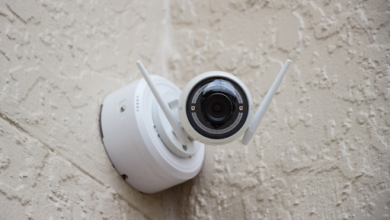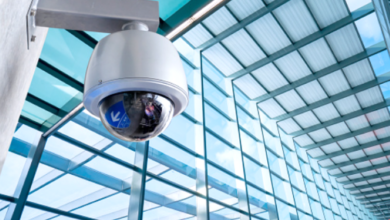Top IT Security Trends in 2024
With the fast-paced advancement and adoption of Information Technology across the globe, there is also an alarming rise in cybersecurity threats. To battle these cybersecurity threats, new cybersecurity measures are also being developed. So, what are these rising cyber threats and the emerging cybersecurity solutions?
Talking to experts, we put together the top IT Security Trends we need to know about in 2024.
1. User Awareness
“Businesses and organizations are taking big steps to tighten their security procedures as cyber threats grow. Many businesses and individuals rely on cybersecurity awareness to avoid costly identity theft and network attacks that can harm their reputations. Apart from installing firewalls and advanced IT procedures, firms today prioritize training their IT staff through seminars and other means. Businesses and organizations are taking big steps to tighten their security procedures as cyber threats grow. Many businesses and individuals rely on cybersecurity awareness to avoid costly identity theft and network attacks that can harm their reputations. Apart from installing firewalls and advanced IT procedures, firms today prioritize training their IT staff through seminars and other means.” (Chris Taylor)
2. Global Phishing Threats
“To date, phishing emails are still the most common security threat to the IT industry. Pseudo-emails and malicious URLs are still popular on the internet, but they are now more specialized, tailored, and geo-targeted. Data breaches are a major topic in healthcare cybersecurity. During the Coronavirus outbreak, some hospitals temporarily eased firewall rules to allow personnel to work from home.” (Chris Taylor)
3. AI (Artificial Intelligence)
“Machine learning (ML) is becoming increasingly proactive in cybersecurity. With ML, cybersecurity has become easier, more effective, and less costly. ML creates patterns and algorithms from a large dataset. It can anticipate and respond to attacks in real-time. Effective algorithms require a lot of data. The data must come from everywhere and represent every imaginable circumstance. To assess threat trends and understand cybercriminal behavior, cybersecurity systems use ML. These help to avoid future assaults and speed up normal duties for cybersecurity specialists.”
Chris Taylor, Marketing Director Profit Guru
4. Increase In OTP Botnets
“I think the most interesting and alarming cybersecurity trend this year and likely well into the future is the hackers for hire phenomenon and the increase in OTP botnets we are seeing. Hacking and malware attacks are being democratized, with programmers selling access to sophisticated botnets on the dark web, in what is often now referred to as the malware as a service market.
“Cybersecurity teams can attempt to confront these botnets, but all it takes to bring down a company’s defenses is one successful breach, so the advantage in this cat and mouse game will continue to go to the criminals. This, to me, represents the most significant and most threatening development in cybercrime in 2022 and perhaps the 22nd century thus far.”
Sebastian Schaeffer, CTO/Co-Founder dofollow.io
5. Zero Trust Networks
“Zero trust networks are finding increased acceptance; Traditional security architecture concepts are often insufficient in the face of escalating threats from both within and outside an organization. A digital identity-based perimeter with four primary features – identity-based schema, continuous trust evaluation, resource secure access, and adaptive access control – can be classified as a zero-trust architecture model. Dynamic authorization, comprehensive identification, management automation, and risk measurement assists enterprises in establishing a sound network security architecture.
“A Zero Trust Architecture (ZTA) is similar to a Virtual Private Network (VPN), but they are not the same. When it comes to creating policies and controlling remote access to individual applications, ZTA is far more secure. Organizations can use ZTA to identify a ‘protect the surface,’ which consists of their most vital and valuable data, assets, applications, and services. They could be unique to each company. It is recognized within an organization, indicating that the organization is well aware of how traffic flows within the protected surface, ensuring secure access to it.”
Daniel Foley, Founder of Daniel Foley SEO
6. Supply Chain Attacks Have Become More Sophisticated
“The recent cyberattack on the SolarWinds Orion platform has raised global awareness of the necessity for organizations to prioritize cybersecurity in 2024. Multiple government and private companies affiliated with the victim’s data were compromised as a result of a single attack on a third-party vendor. This is most likely the primary reason why supply chain attacks are on the rise.
“Multiple attack paths can be opened by a single point of failure. To find the weakest link in your supply chain network, attackers hunt for it. They may be businesses that don’t have as many security procedures in place. The Identity Theft Resource Center published a report that showed how supply chain attacks are on the rise (ITRC).”
Daniel Foley, SEO Specialist at CloudTech24
7. Cyber Liability Insurance
“Cyber liability insurance is skyrocketing right now due to the huge increase in attacks over the last couple of years. The digital transformation of how business is done today means that businesses are carrying a massive amount of financial liability related to cybersecurity threats. The cyber financial liability organizations face include First and Third Party and Regulatory.
“What’s interesting is Regulatory: more and more we are seeing new privacy laws, such as in New York (Shield Act), California (CCPA), etc., that impose harsh fines for consumer data breaches even if your company doesn’t reside there. Compliance is a huge issue right now, and organizations are getting hit with fines/penalties if their security technologies don’t meet compliance regulations. Cyber liability insurance policies have responded to these new challenges, providing coverage for attacks of all kinds. But not all cyber liability policies are created equally.
“As a consequence, cybersecurity and cyber insurance providers are beginning to integrate the two industries. You’re going to see a lot more offerings on the market that tie the two together.” (Chase Norlin)
8. Remote Worker Security
“Remote worker security is now a necessity; modern threats targeting vulnerable remote workers in unsafe cyber environments means the security industry needs to respond by implementing more User Behavior Analytics (UBA) in their platforms and utilize XDR to analyze this behavior (accessing Netflix, Dropbox, cloud streaming, suspicious resources, etc. while on the job are huge vulnerabilities) and proactively prevent these threats from invading remote users, protecting their endpoint data.
“Now more than ever, organizations must emphasize protection on their remote workers to decrease insider threats and ensure data is locked down.”
Chase Norlin is the CEO of Transmosis





